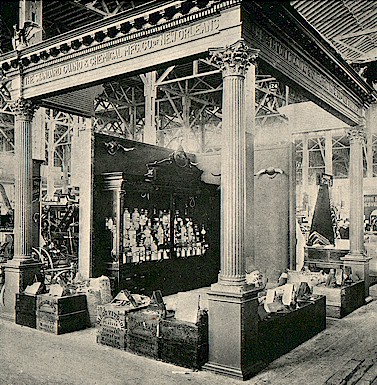
|
Agricultural History Series |
Missouri State University |
1904 St. Louis Worlds Fair
The Standard Guano and Chemical Manufacturing Company
Even before the 1904 World’s Fair in St. Louis began, the Standard Guano and Chemical Company of New Orleans had been in existence for around 30 years. It had experienced success in making special fertilizers to fit the special needs of farmers of the southern and Midwest parts of the U.S. and the company carried an excellent reputation of using sound scientific methods and dealing fairly with its’ customers. The success of the Guano Company was obvious as the company had a plant that covered 20 acres of land in New Orleans.
The company’s pavilion at the 1904 World’s Fair Palace of Agriculture was designed to exhibit their special fertilizers for a specific purpose and also show off their general fertilizer lines that were more applicable to many of the farmers of the time. In addition to this, the company also had a system where the buyer could buy several general types of fertilizer materials and custom blend their own mixtures.

The Standard Guano & Chemical Mfg. Co. of New Orleans Display
The company had a research base that believed combinations of animal bone and animal matter gave them the best possible and field tests proved this. A clipping from the “Farmers’ Hand Book”, which the Guano company published stated how their product permanently enriched the soil, made for rust and blight resistance, made plants more insect resistant, and makes for higher yielding crops.
Some of the special fertilizer blends were made for: cotton, sugar cane, oranges, rice, cabbage, tobacco, strawberries, nursery plants and onions. The raw materials the company used most commonly were animal blood, bone meal and the meat guano (scraps). These materials were easily and cheaply attained from the cattle industries of Texas and the western U.S. and also South and Central America.
The products of the Standard Guano and Chemical Mfg. Company had won awards for it’s’ products at the 1884 World’s Centennial Cotton Exposition and the 1885 North, Central, and South American Cotton Exposition.
Source: The World’s Work Advertiser, 1904
This page was designed by Regan Weatherly and is maintained by Lyndon Irwin.